Instruction
The illusion of the putter shaft, and why you should forward press
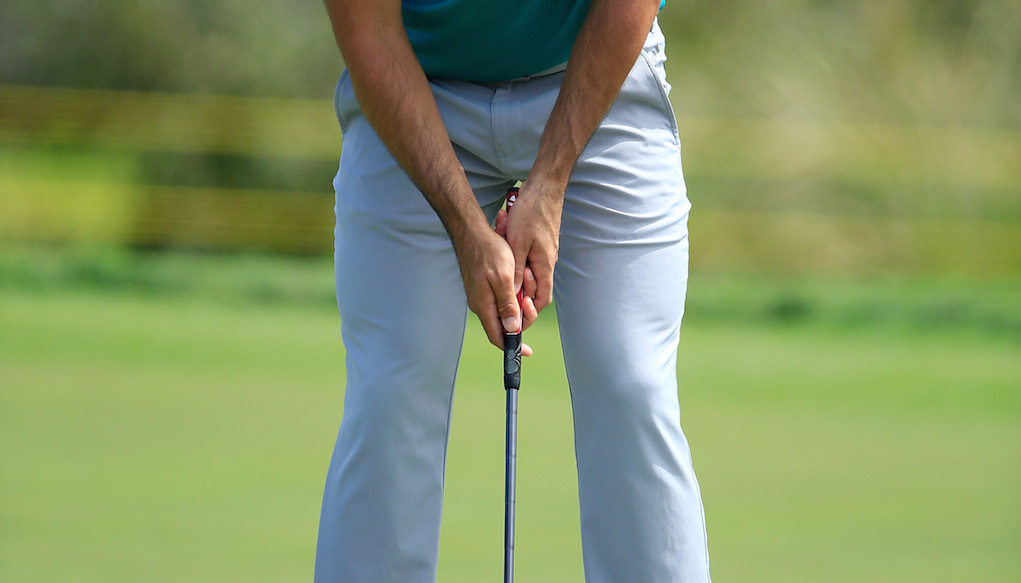
If you watch the vast majority of Tour players putt, you’ll notice that their hands start in front of the putter head at address, and this condition doesn’t vary throughout their stroke.
Most golfers don’t putt this way, though. Their hands start behind the putter head at address and tend to break down even more. They “slap” at the ball through impact and beyond, which is detrimental for both speed and direction control.
Golf instructors can agree that in order to be effective on the greens, golfers must have the putter shaft returning to neutral or even leaning forward at impact, allowing the hands to lead the blade throughout the stroke. Fundamentally, we know that the left hand controls the putter face and its direction, while the right hand controls the putter head and its effective loft (for right-handed golfers). These two factors together allow golfers to roll their putts more consistently.
The bottom line: if you do not lead the putter head with your hands on today’s fast green, you’ll struggle to be an effective putter.
The Illusion
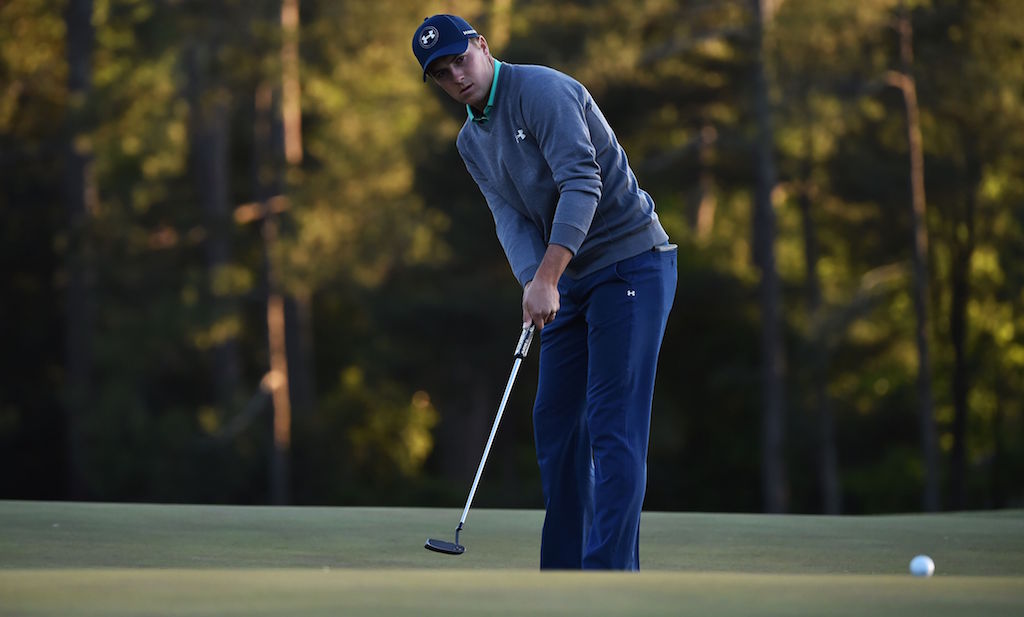
Jordan Spieth keeps the back of his left hand stable and ahead of the putter head throughout his stroke.
So isn’t the solution as simple as forward pressing your hands during address. Why is that so hard? Well, when most amateurs forward press it’s almost never enough. That’s because they’re fighting an illusion.
That’s right, there’s an optical illusion that occurs when golfers look down from address at their hands and their putter shaft angle. It influences the breakdown of their impact alignments, and promotes a “slapping” action of the wrists and hands. It also encourages the putter head to swing past the hands, leaning the shaft away from the target at impact adding loft to the putter — not something we want.
Try It Yourself
To understand how putters are designed, place your putter flat on the ground, and up against the wall as pictured below. You will notice that the shaft leans away from the target.
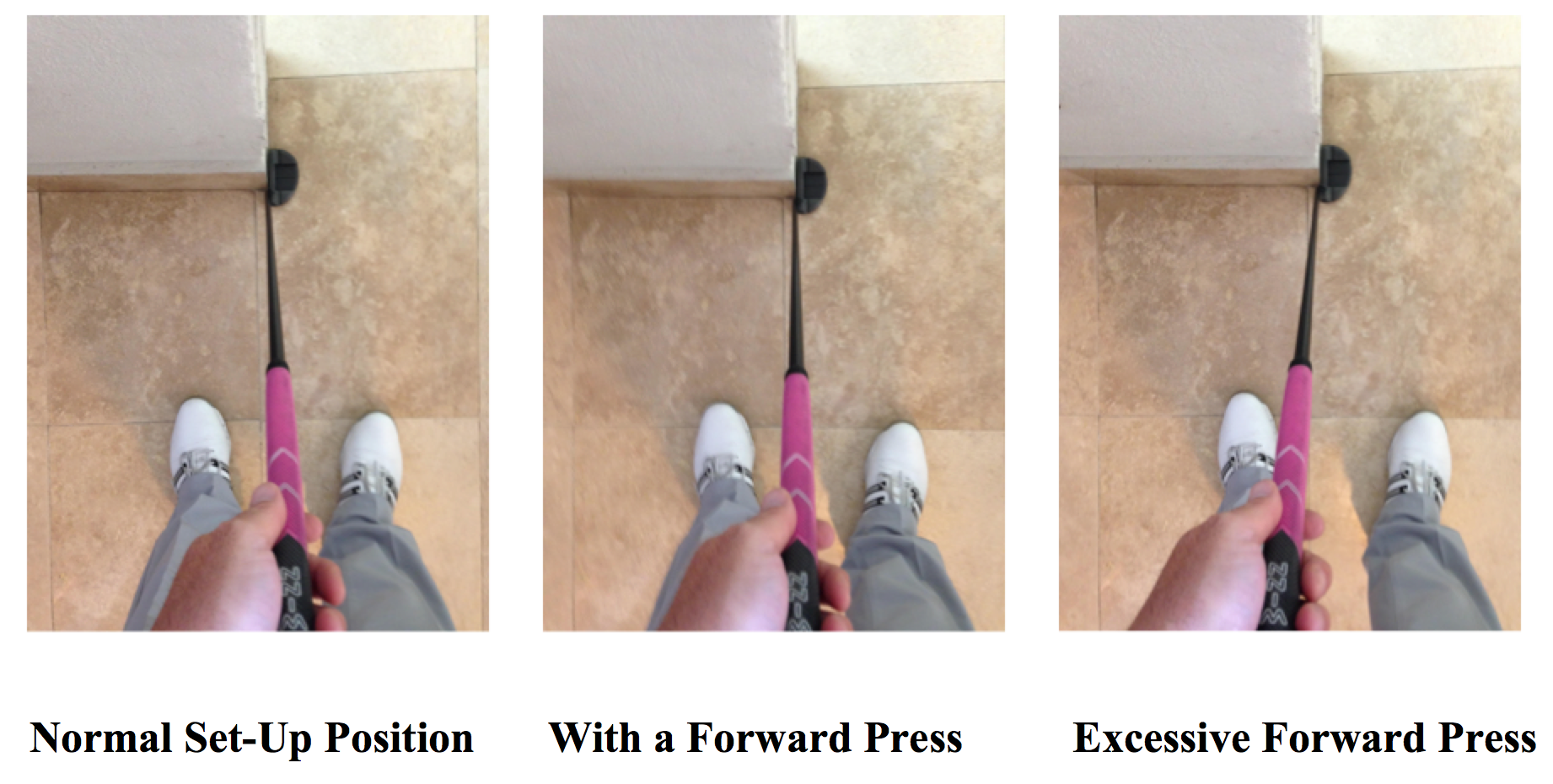
If you still don’t buy it, take your setup in front of a full-length mirror and look down at the shaft of the putter. From your address position, you will swear that your putter shaft is even or slightly ahead of the golf ball. But when you look in the mirror you will see an entirely different picture. The putter shaft will actually be behind the putter head.
The Illusion Explained
Putter manufactures have built-in this backward leaning of the shaft and loft into the putter face to promote good mechanics (as well as other things) by forcing players to forward press their hands at address.
This was and still is a great idea, but the problem is that it causes an illusion, leading golfers to believe that their hands are pressed forward more than they actually are. This means that when the shaft is set in a forward-leaning position, the hands are really just over the top of the putter head, not in front of the blade as it looks visually from above.
How to Overcome the Illusion
Most golfers would be better off if they forward pressed their hands too much, rather than too little at address with their putter. This way, there is more room for error if something does breakdown.
A good rule of thumb is to always point the butt end of the putter shaft at the first belt loop on the target side of your belt buckle. As you look down, you may think you have the putter shaft pointed too far toward the hole, but when you look into your mirror you will find that it is only slightly forward leaning. This is the most desirable position for you to roll a putt.
Use a mirror to help you understand of the illusion of the putter shaft. I promise it will give you better control over your line and speed, and knowing you’re set up correctly will give you more confidence on the greens, too.
Don’t be fooled by the illusion.
- LIKE392
- LEGIT38
- WOW34
- LOL7
- IDHT9
- FLOP22
- OB8
- SHANK72
Instruction
Clement: Stop ripping off your swing with this drill!

Not the dreaded headcover under the armpit drill! As if your body is defective and can’t function by itself! Have you seen how incredible the human machine is with all the incredible feats of agility all kinds of athletes are accomplishing? You think your body is so defective (the good Lord is laughing his head off at you) that it needs a headcover tucked under the armpit so you can swing like T-Rex?
- LIKE0
- LEGIT1
- WOW2
- LOL0
- IDHT0
- FLOP0
- OB0
- SHANK2
Instruction
How a towel can fix your golf swing
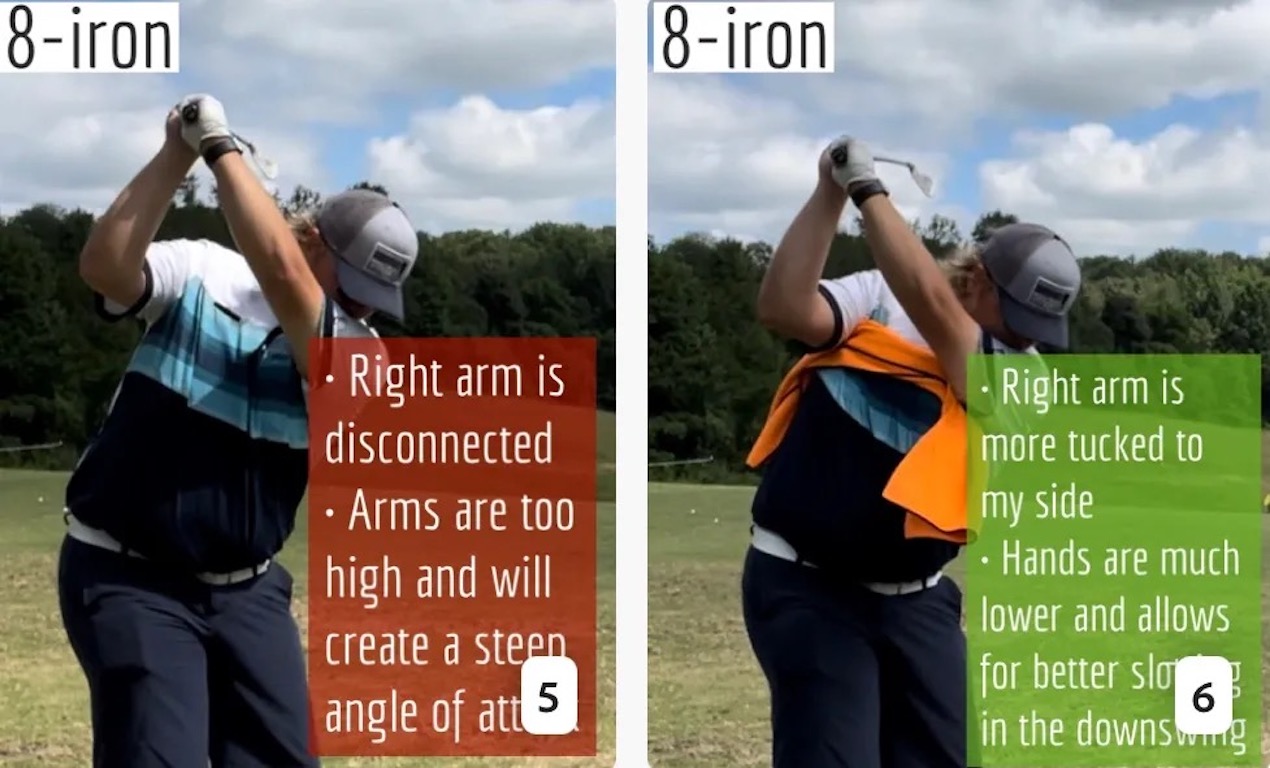
This is a classic drill that has been used for decades. However, the world of marketed training aids has grown so much during that time that this simple practice has been virtually forgotten. Because why teach people how to play golf using everyday items when you can create and sell a product that reinforces the same thing? Nevertheless, I am here to give you helpful advice without running to the nearest Edwin Watts or adding something to your Amazon cart.
For the “scoring clubs,” having a solid connection between the arms and body during the swing, especially through impact, is paramount to creating long-lasting consistency. And keeping that connection throughout the swing helps rotate the shoulders more to generate more power to help you hit it farther. So, how does this drill work, and what will your game benefit from it? Well, let’s get into it.
Setup
You can use this for basic chip shots up to complete swings. I use this with every club in my bag, up to a 9 or 8-iron. It’s natural to create incrementally more separation between the arms and body as you progress up the set. So doing this with a high iron or a wood is not recommended.
While you set up to hit a ball, simply tuck the towel underneath both armpits. The length of the towel will determine how tight it will be across your chest but don’t make it so loose that it gets in the way of your vision. After both sides are tucked, make some focused swings, keeping both arms firmly connected to the body during the backswing and follow through. (Note: It’s normal to lose connection on your lead arm during your finishing pose.) When you’re ready, put a ball in the way of those swings and get to work.
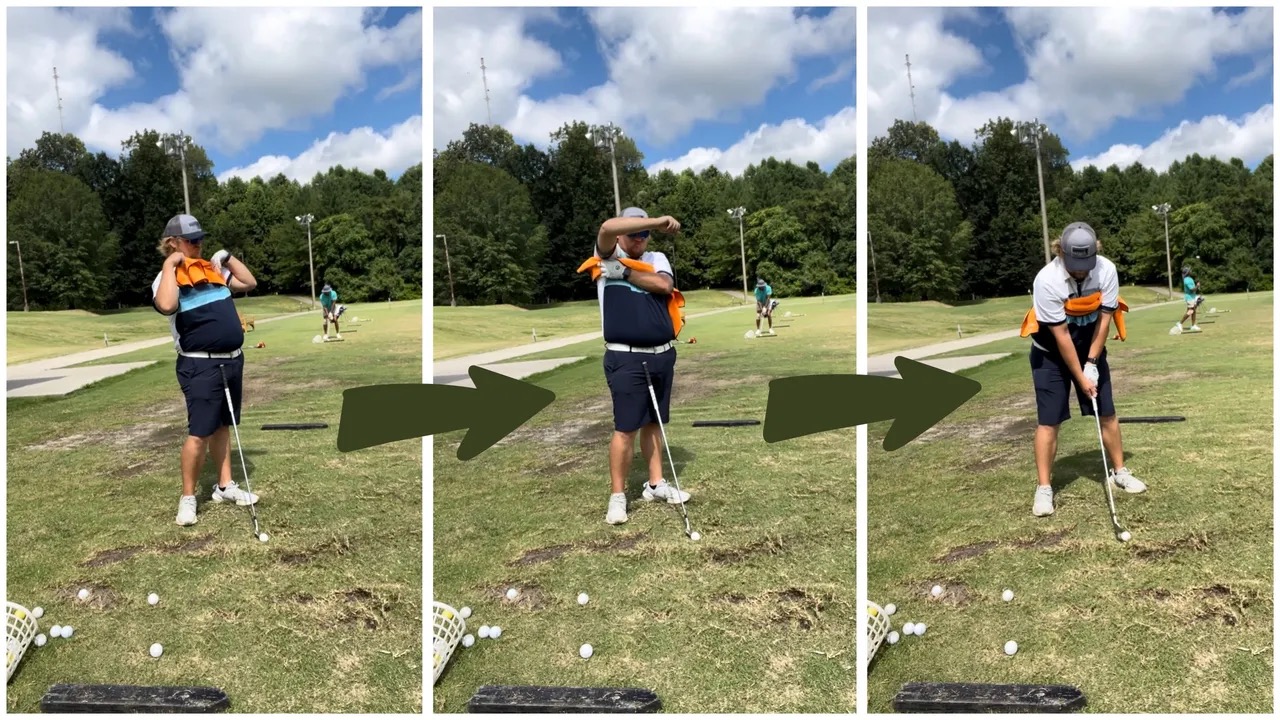
Get a Better Shoulder Turn
Many of us struggle to have proper shoulder rotation in our golf swing, especially during long layoffs. Making a swing that is all arms and no shoulders is a surefire way to have less control with wedges and less distance with full swings. Notice how I can get in a similar-looking position in both 60° wedge photos. However, one is weak and uncontrollable, while the other is strong and connected. One allows me to use my larger muscles to create my swing, and one doesn’t. The follow-through is another critical point where having a good connection, as well as solid shoulder rotation, is a must. This drill is great for those who tend to have a “chicken wing” form in their lead arm, which happens when it becomes separated from the body through impact.
In full swings, getting your shoulders to rotate in your golf swing is a great way to reinforce proper weight distribution. If your swing is all arms, it’s much harder to get your weight to naturally shift to the inside part of your trail foot in the backswing. Sure, you could make the mistake of “sliding” to get weight on your back foot, but that doesn’t fix the issue. You must turn into your trial leg to generate power. Additionally, look at the difference in separation between my hands and my head in the 8-iron examples. The green picture has more separation and has my hands lower. This will help me lessen my angle of attack and make it easier to hit the inside part of the golf ball, rather than the over-the-top move that the other picture produces.
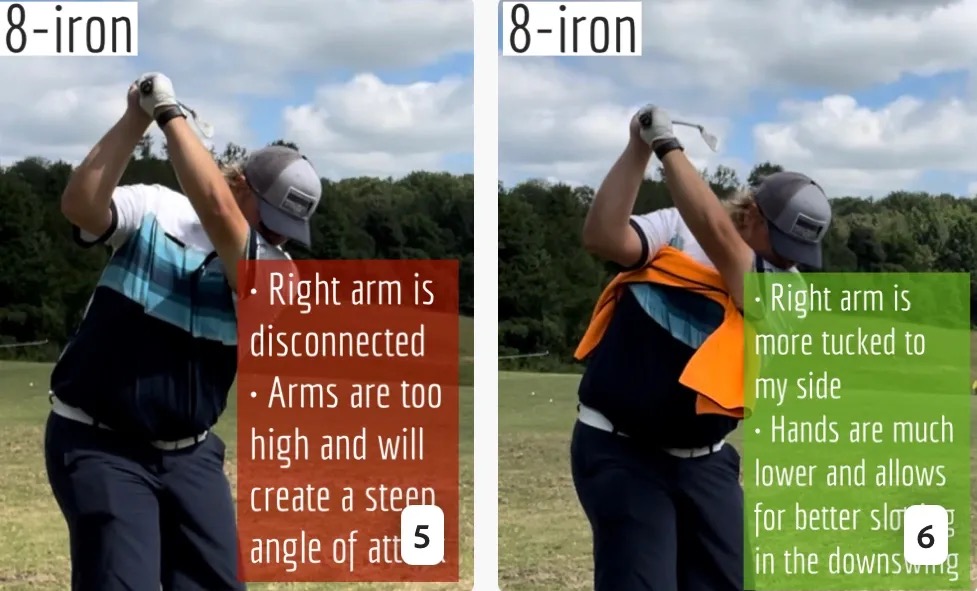
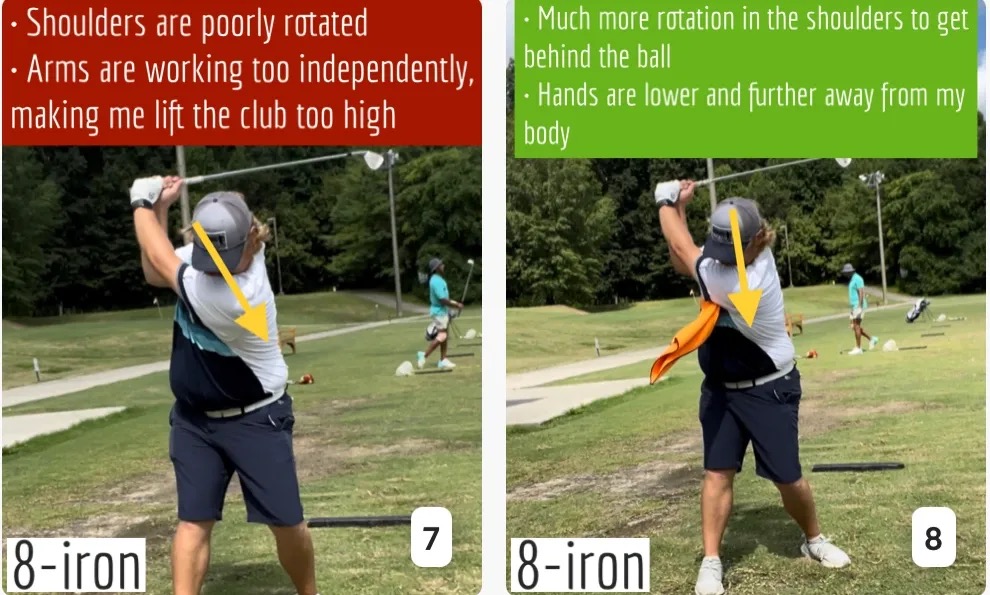
Stay Better Connected in the Backswing
When you don’t keep everything in your upper body working as one, getting to a good spot at the top of your swing is very hard to do. It would take impeccable timing along with great hand-eye coordination to hit quality shots with any sort of regularity if the arms are working separately from the body.
Notice in the red pictures of both my 60-degree wedge and 8-iron how high my hands are and the fact you can clearly see my shoulder through the gap in my arms. That has happened because the right arm, just above my elbow, has become totally disconnected from my body. That separation causes me to lift my hands as well as lose some of the extension in my left arm. This has been corrected in the green pictures by using this drill to reinforce that connection. It will also make you focus on keeping the lead arm close to your body as well. Because the moment either one loses that relationship, the towel falls.
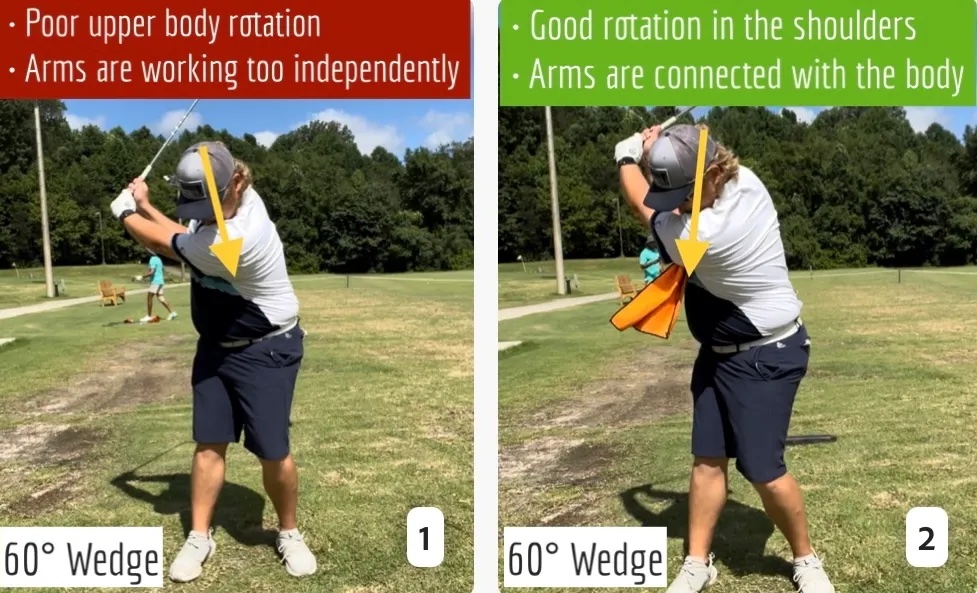
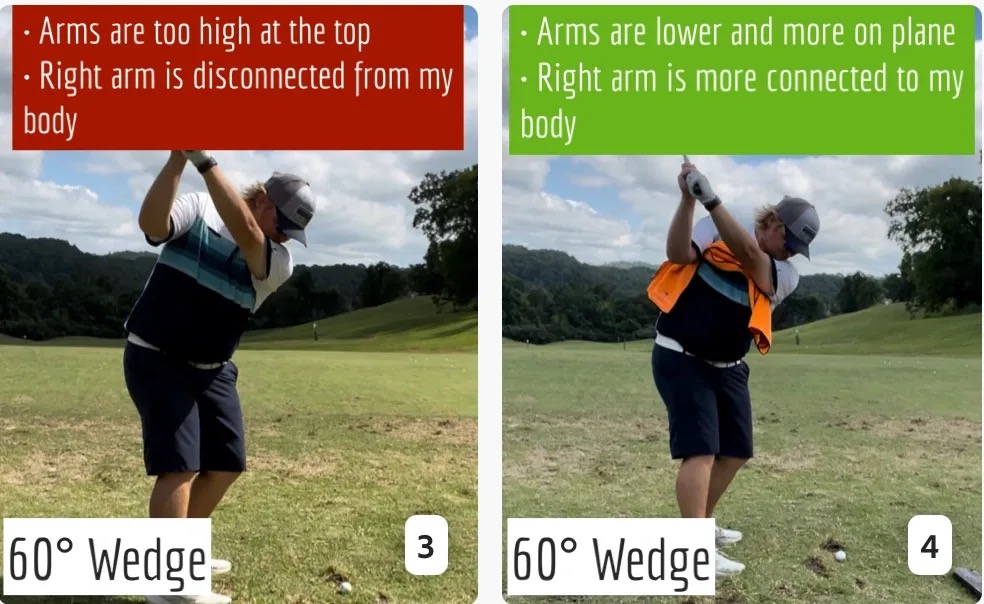
Conclusion
I have been diligent this year in finding a few drills that target some of the issues that plague my golf game; either by simply forgetting fundamental things or by coming to terms with the faults that have bitten me my whole career. I have found that having a few drills to fall back on to reinforce certain feelings helps me find my game a little easier, and the “towel drill” is most definitely one of them.
- LIKE11
- LEGIT1
- WOW2
- LOL0
- IDHT0
- FLOP2
- OB0
- SHANK8
Instruction
Clement: Why your practice swing never sucks
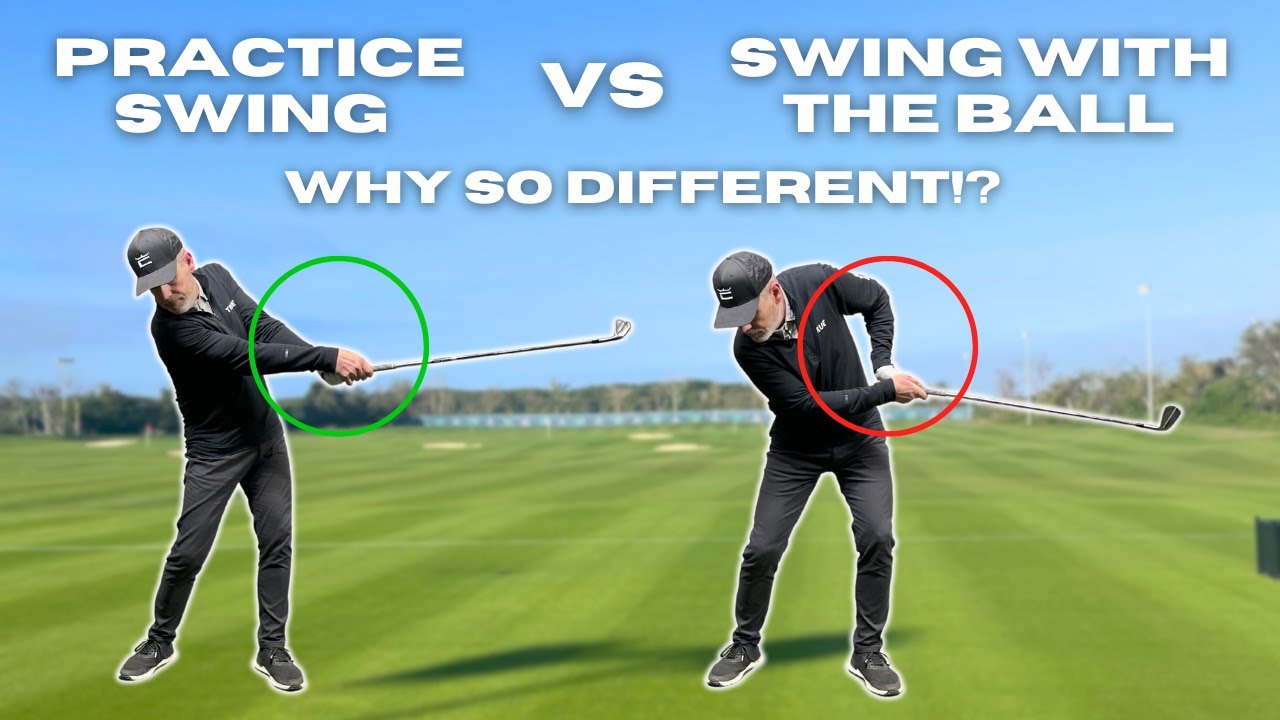
You hear that one all the time; I wish I could put my practice swing on the ball! We explain the huge importance of what to focus on to allow the ball to be perfectly in the way of your practice swing. Enjoy!
- LIKE0
- LEGIT0
- WOW0
- LOL0
- IDHT0
- FLOP0
- OB0
- SHANK2
-
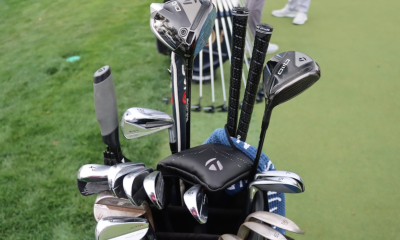
 Whats in the Bag3 weeks ago
Whats in the Bag3 weeks agoScottie Scheffler WITB 2024 (March)
-
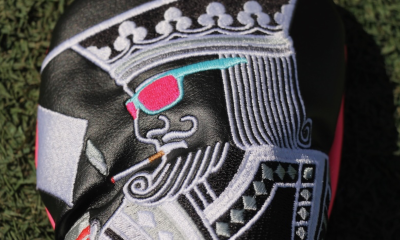
 Tour Photo Galleries3 weeks ago
Tour Photo Galleries3 weeks agoPhotos from the 2024 Arnold Palmer Invitational
-
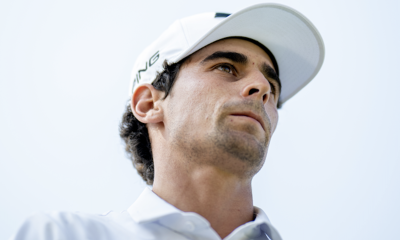
 19th Hole3 weeks ago
19th Hole3 weeks agoJoaquin Niemann names 3 PGA Tour events he’d love to play each year ‘in a perfect world’
-
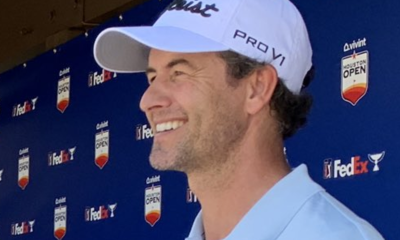
 19th Hole3 weeks ago
19th Hole3 weeks ago‘Seems suspect’ – PGA Tour pro hits out at decision to hand Adam Scott and Webb Simpson Bay Hill sponsor exemptions
-
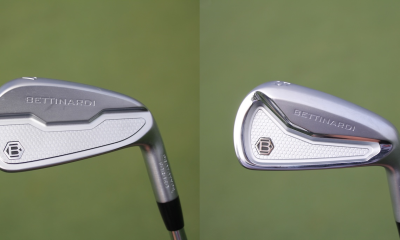
 Equipment3 weeks ago
Equipment3 weeks agoSpotted: Bettinardi irons at the Arnold Palmer Invitational
-

 19th Hole2 weeks ago
19th Hole2 weeks agoPaulina Gretzky opens up on receiving death threats following DJ’s move to LIV Golf
-

 19th Hole3 weeks ago
19th Hole3 weeks agoVincenzi’s 2024 Arnold Palmer Invitational betting preview: Big names ready to pounce at Bay Hill
-
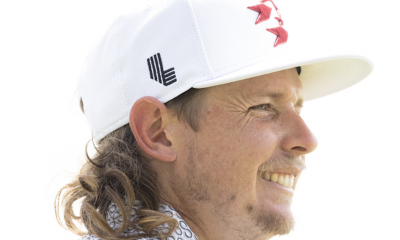
 19th Hole3 weeks ago
19th Hole3 weeks agoVincenzi’s LIV Golf Hong Kong betting preview: Trio of major champs primed for big week





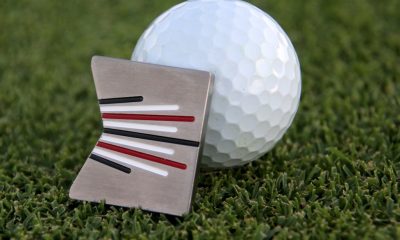

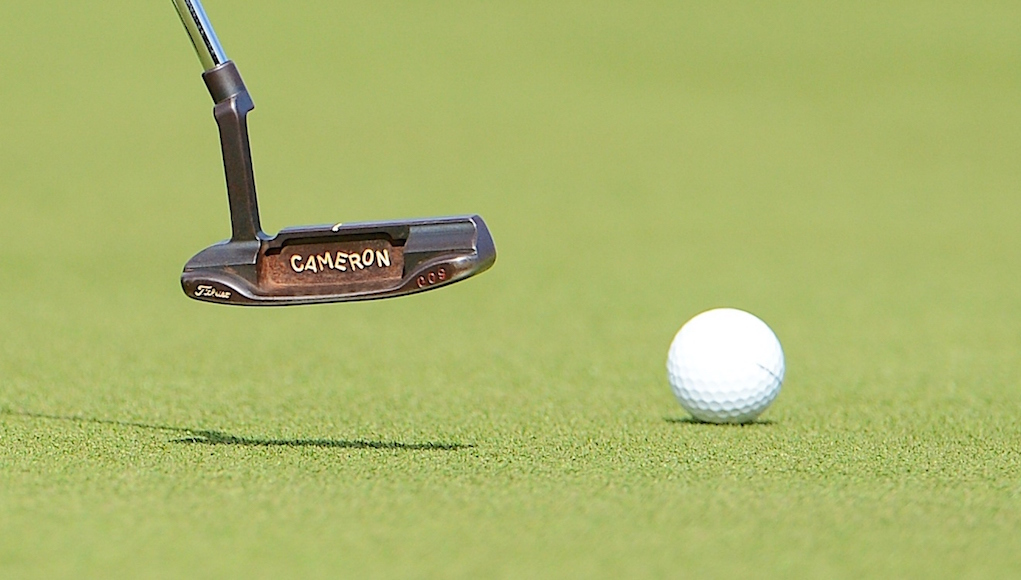
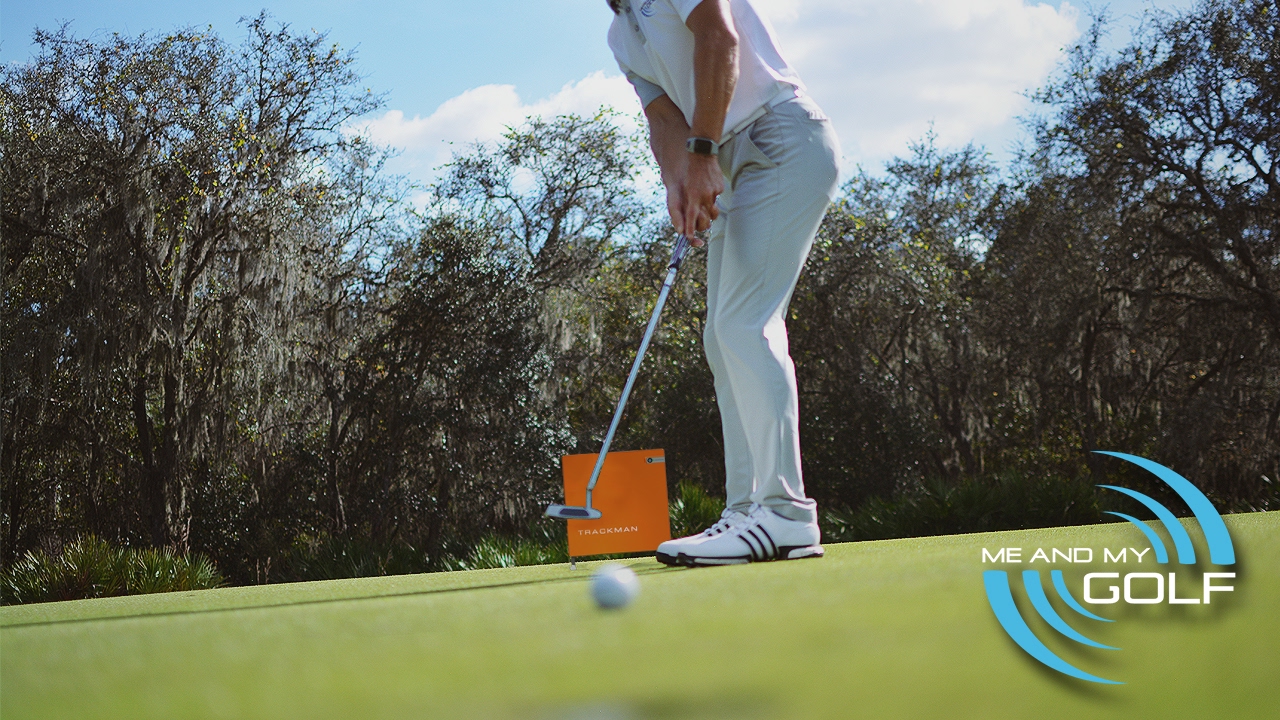
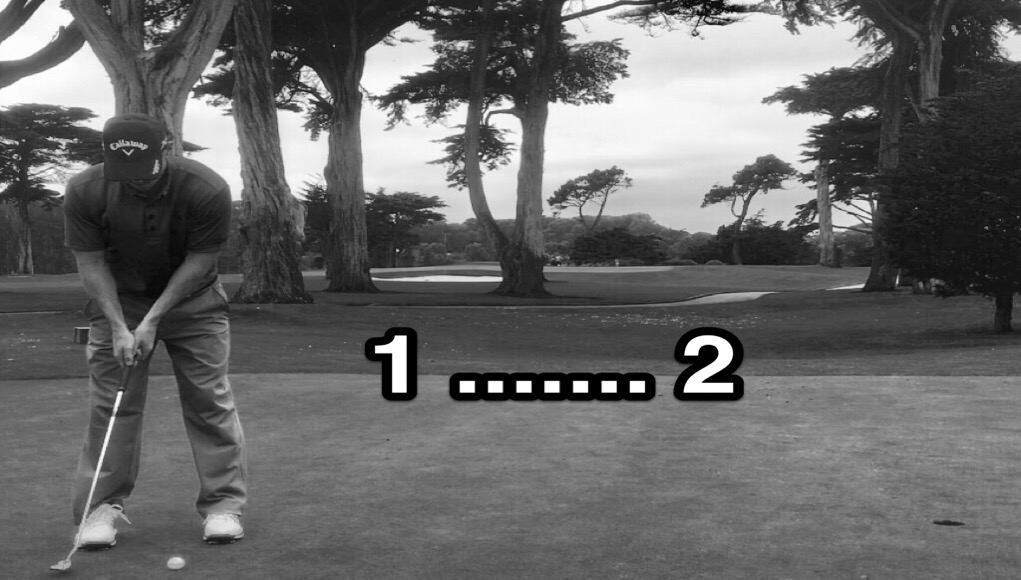
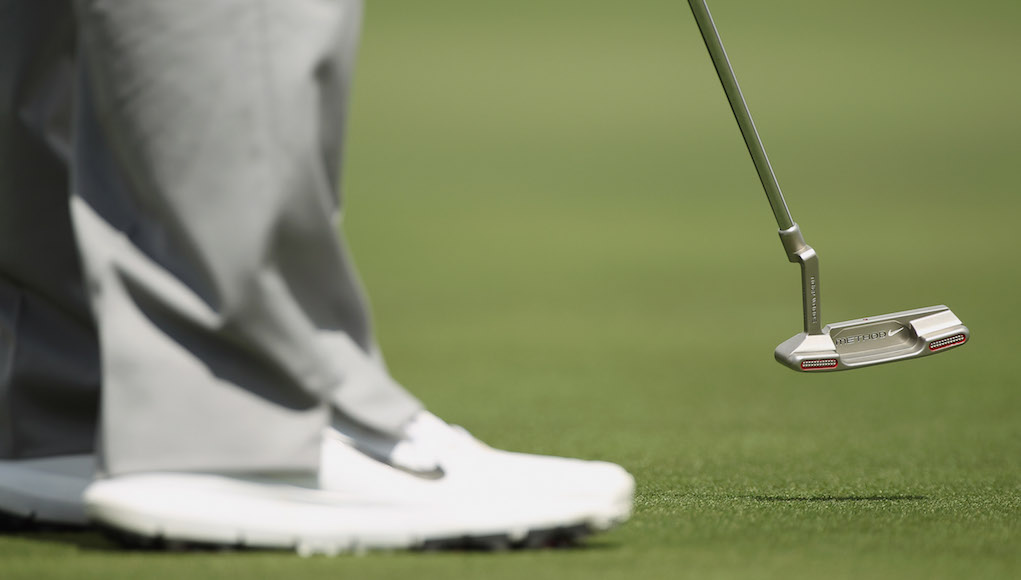









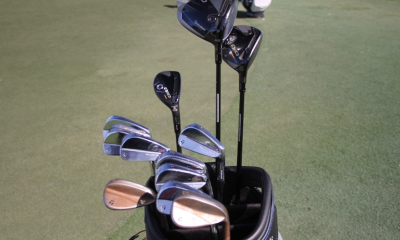

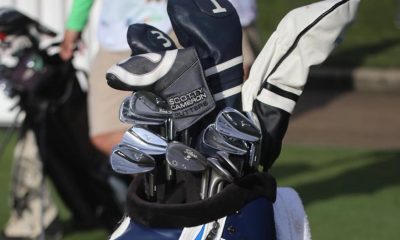

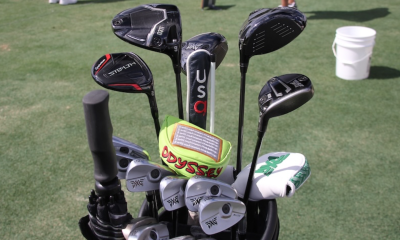

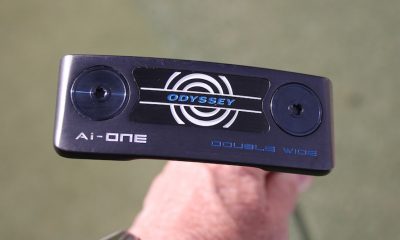

Myths as Facts?
Aug 6, 2019 at 5:12 am
A lot of myths being repeated here. A forward press is a triggering device, nothing more. It takes maybe .8 degrees of loft away, so a 4 degree club is more than fine. I’m amazed at the poor quality of this article and the comments supporting it. It seems because someone works with Trackman people assume they have studied this, but certainly this is one of the most ill informed articles I’ve seen on this topic. Ask Frank Thomas. As Geoff Mangum. Ask Ralph Maltby. They will all set it straight.
EgdewRich
Feb 27, 2017 at 7:26 am
Combine Tom’s comments and analysis with Dave Stockton videos and written work and you may find a formula for improved rolling of the ball! I find attaching two longer tees to the heel and toe helps in practice since “seeing loft” helps me see the impact moment that produces a tight roll. Try gluing two quarters together for a practice ball
marker and resting the putter head on them before starting the stroke helps align the “vertical” sweet spot with the impact point on the ball. Try with a Nike Ping or Odyssey textured surface putter face! Putt to a 5 inch wide block of wood and work on the tight roll and just hitting the woodblock!
jc
Jan 16, 2017 at 2:25 pm
this works very well..I have the new golf pride overside piston grip on my ping rustler and b54….I just set it down and it naturally fall into the postion in the article…I then step in so my body mathes the end of the club….then back and into the hole….works with either putter, a no arc and a slight arc…
REAL REASON...
Jan 5, 2017 at 8:44 am
The real reason is because putters are ill designed.
1. Loft causes the ball to be hit below the equater
2. This causes the ball to get airborne, have backspin, bounce and results in bad distance control
Good putters forward press to reduce loft (3* quickly becomes 0* or less).
The ball is then hit at the equator or higher.
“Topped” balls roll better
Putting is the only shot in golf you really don’t want to get airborne….
better hit at the equator or above… better forward press or have negative loft to start with.
mark c
Jan 19, 2017 at 7:05 am
not true – unless youre playing on marble greens you need the ball to initially get airborne to lift it above the slight sunken lie it will be in on the grass and get it rolling on the top
tom stickney
Jan 3, 2017 at 4:55 pm
23 years of full-time teaching…if you doubt this, go to your local putting green any busy saturday am
Steven
Jan 3, 2017 at 2:39 pm
Great Advice. I think many of us would benefit from looking in the mirror during parts of the swing to see what is really happening. Like they always say, feel is not real.
Alfredo Smith
Jan 2, 2017 at 1:32 pm
Awesome read! I use a forward press to avoid a static swing. That illusion check blew me away because it has always appeared that my hands are ahead at address before I started the press. After reading this article my forward press is giving me that much more confidence. Thanks Tom Stickney!
david
Jan 2, 2017 at 1:08 pm
I put a line on the ball and, if I see the line after I putt, I feel I have hit a good putt because it rolled end over end. Seems to me that’s all that matters. Am I wrong on that? If I could read greens worth a damn and hit the short ones hard enough, I might be a decent putter.
Deadeye
Jan 1, 2017 at 11:14 am
Going back to legal anchoring days, why were the long and belly putters so effective? It’s my impression there was no forward press in those strokes. At least not in mine.
Tcope
Dec 31, 2016 at 9:10 am
The best thing I ever did was actually get fitted for a putter. Specifcally an Edel. That putting fit session was eye opening. Instead of really changine stance, press etc. Just have a putter built to your EYES and how you see the ball and address it. Had my first sub 2 putts per round the other day.
PineStreetGolf
Dec 30, 2016 at 10:50 am
My coment didn’t get posted for some reason, so sorry if this is a double.
Where did you get the data that “most” golfers don’t forward press? Study? Could you link it?
Having your hands ahead of the putter is nice, I guess, but its all relative. If your putter has three degrees of loft and 2* of shaft lean and you press it’ll be awful. Its all relative. The full swing is relatively similar and governed by motion physics, so you can make generalizations, but the putting stroke is much smaller – “get your hands forward” might be absolutely awful advice for some people.
Where did you get the source for your comment that “most” need it? Is this just you making it up? Poll? Shotlink? The entire article is based on this sentence and there isn’t a whiff of authority to support it. I’m not saying its wrong, but if your going to solve a problem with an enitre article it would be nice if you first proved there was actually a problem to be solved – where did the data that “most” golfers do this come from?
Myths as Facts?
Aug 6, 2019 at 5:14 am
No one presses two degrees at impact, forward press typically results in a maximum of .8 degrees reduction in loft which is fine for a typical 4 degree putter. That’s not the issue here. However the issues here are indeed many, agreed.
PineStreetGolf
Dec 30, 2016 at 10:18 am
“Most golfers don’t putt this way, though. ”
This is from your article. How do you know this? Study, survey? Or did this come from your head? Curious.
Blanket golf advice “always forward press…” is generally bad, unless you actually have tendency numbers to back it up. Where did your “most” come from? are we talking 70%? 90% Its a whole lot different if your making up that 65% do it versus an actual study that shows 95% do it.
In fact, Pelz concluded in his book the exact opposite – “most” golfers *do* have a forward press at impact. Its just offset by too much body lean away from the target.
i’d really like to see some evidence for the “most don’t forward press” basis of this article. A forward press is relative. If you forward press and then your spine titlts backwards, you actually arn’t forward pressing at all. Its alot more interconnected than this article makes it seem.
Putting your hands forward is not the same thing as proper loft at impact.
JH
Dec 29, 2016 at 10:58 pm
garbage
RichEwen
Dec 30, 2016 at 6:07 am
…and the reason for your succinct comment is??
alexdub
Dec 30, 2016 at 12:01 pm
Hang in there man, you’ll find a job soon!
Lowell
Dec 29, 2016 at 7:05 pm
I had this experience today working with a new putter. I felt to me that if I just set the putter down the putter has a tendency to have a lean away from the target. I almost have to promote pressing my hands forward which looked better but will take some time to buy into. I felt like the feel of the putt felt more solid as compared to when I would step in and set the putter with its natural position as I saw it. Pretty significant to say the least. Knowing this now, I will stick with pressing my hands forward and get that solid consistent roll that I want.
Mr B
Dec 29, 2016 at 6:41 pm
Great read Tom. Quick questions: I feel like I seriously close the face when I try to fwd press. Looks so awkward at address.
Is this common and just an illusion? If not an illusion and problematic, any tips not to close down the face when using a fwd press?
Prime21
Dec 29, 2016 at 11:45 pm
Tape a tee to the face of the putter. If you press the putter properly, it will lean towards the hole. If you are truly closing it will turn inwards towards you. A proper press may very well look “closed” to you, but if you have a system to check it, you will be able to determine if what your eyes are telling you is true or simply different. You may also want to put a line on the front of the tee (facing the target) with a sharpie. If done properly you will never see it, if you’re closing it, it will come into vision.
MR B
Jan 3, 2017 at 12:46 pm
thank you. will give it a whirl
Job
Dec 29, 2016 at 5:25 pm
What about using this technique with a Seemore? When I do this, it exposes the red button on the riflescope and takes away the advantage of ensuring proper alignment, which was one of the big draws of that putter. I now see that I almost assuredly am behind the ball but maybe there is a compromise?
Dill Pickleson
Dec 29, 2016 at 8:30 pm
I use a seemore and arc stroke and don’t think forward press is necessary if you square the face. A device like SkyPro will tell you that. Seemore gives you the setup and feedback you need
Double Mocha Man
Dec 29, 2016 at 4:36 pm
What if I’m wearing Sansabelt trousers left over from the ’70’s? There are no belt loops.
Prime21
Dec 29, 2016 at 11:46 pm
+4
TexasSnowman
Dec 31, 2016 at 12:05 am
Just point the butt of the grip at the penguin logo on your shirt
mlb
Dec 29, 2016 at 3:35 pm
Thanks Tom this helps me a lo i have this problem.
Darrin
Dec 29, 2016 at 2:27 pm
Face square at impact is all that matters. I just focus on the putter face being perpendicular to my starting line, what the shaft is doing at that point is irrelevant.
Jason
Dec 29, 2016 at 1:24 pm
Typical putter lofts are 3.5 to 4 degrees, which is typically measured when the shaft is vertical, correct? If the first belt loop is two inches ahead of the vertical line the putter shaft is leaning forward by 3 degrees which reduces static loft by the same amount. So, wouldn’t I want a putter with five or six degrees of loft if the goal is to return to impact on a level path with three degrees of shaft lean?
If some accommodation is not made in the putter’s loft it seems like a lot of people would begin experiencing bouncing putts.
I would love to know your two cents..
tom stickney
Dec 29, 2016 at 1:50 pm
It all depends on how you deliver the puttershaft into impact…for this article I wanted people to understand only the basics of the “illusion.” Find someone with a SAM Puttlab or a Quintic in your area for the best static/dynamic loft fitting.
Dave R
Dec 29, 2016 at 1:21 pm
Very good and yes it works ,I’ve done it for years tought to me over 40 years ago by a very old and good friend.
Jay
Dec 29, 2016 at 12:59 pm
Good read!!
Philip
Dec 29, 2016 at 12:21 pm
Tom, indeed when you place the putter flat on the ground you will get backward shaft lean, but the face of the putter will also be leaning back and adding loft. I’ve never putted like that and don’t know anyone that does either. I putt with the club face square and flat to the ball which results in some natural forward shaft lean. When I placed the putter faces up against a square steel block I see just a bit of forward shaft lean and when I set up at address I see even a bit more forward shaft lean that matches the full-length mirror when I look up. If one allows the putter to naturally hang from their arms and then lines up the club face to the ball, they will have no choice but to have some forward shaft lean unless their setup is messed up. I do not see this is an optical illusion, but more of an issue of improper setup or not understanding how to use a tool “putter” properly.
tom stickney
Dec 29, 2016 at 12:35 pm
not always…
Tom
Dec 29, 2016 at 11:48 am
Great article. And this technique works.